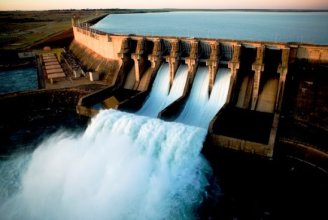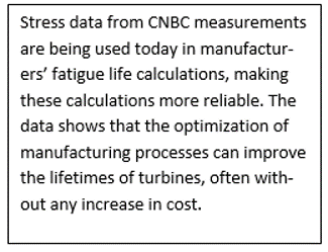Copyright 2012 neutronsources.org | All rights reserved. | Powered by FRM II | Imprint / Privacy Policy
Predicting the Reliability of Turbine Runners in Hydro Power Plants
Hydro-Québec is using stress data from the Canadian Neutron Beam Centre (CNBC) to improve electricity generation from hydroelectric dams.
Date: 14/04/2016
Source: http://www.cnl.ca/

The water flow in hydroelectric dams makes turbine runners turn, and this motion is used to produce electricity. These critical parts are expensive, costing up to $10 million each, and if one fails, the lost electricity production can be very costly.
To ensure reliability, Hydro-Québec ¬– which generates electricity for the Canadian province of Quebec – asks turbine manufacturers to show that their turbines will last at least 70 years. But how can that be done without having to wait 70 years?
Traditionally, the hydraulic engineering community has relied on analysis of the stress under a full load to predict reliability. This method has worked well, and early failures of turbines are rare. However, when failures do occur, the failure mechanism is analyzed—and is most frequently linked to the constant change in load while in service. That’s why manufacturers and large utilities are improving turbine reliability using computer models to perform fatigue life calculations (i.e., to predict how many cycles of loading and unloading the turbine can withstand before a detectable crack appears).

Institut de recherche d’Hydro-Québec (IREQ), the research arm of Hydro-Québec, performs research in partnership with manufacturers and universities to gather the experimental data needed to build, improve and validate these models. The data collected includes data about the material properties and how these properties change as a result of processes such as welding or subsequent heat treatment, which is used to increase the toughness and ductility of welds and to reduce residual stresses.

One research team, which included IREQ and École de technologie supérieure, accessed CNBC to study the effectiveness of heat treatment after welding stainless steel with a filler material. The research team needed to know how stress created by the welding process deep inside the steel would be affected by the heat treatment. The results of the neutron beam measurements showed that welding can, in fact, produce a desirable stress distribution, and also that, after heat treatment, the magnitude of the stress was significantly relieved. The neutron beam data correlated well with the team’s findings that used other methods for determining stress, thereby providing high confidence in the results.
IREQ published this research in 2010, thus providing residual stress data that is now incorporated into manufacturers’ fatigue life calculations. Alstom, a prominent manufacturer of hydraulic turbines, and Hydro-Québec have continued a large research program aimed at improving their understanding of the factors influencing runner lifetime. The residual stress measurements from the CNBC and the fracture mechanics properties measurements brought useful data to this program, making today’s lifetime calculations more reliable. Further, they have showed that optimization of manufacturing processes like welding and heat treatment can improve the lifetime of turbines, often without any increase in cost.